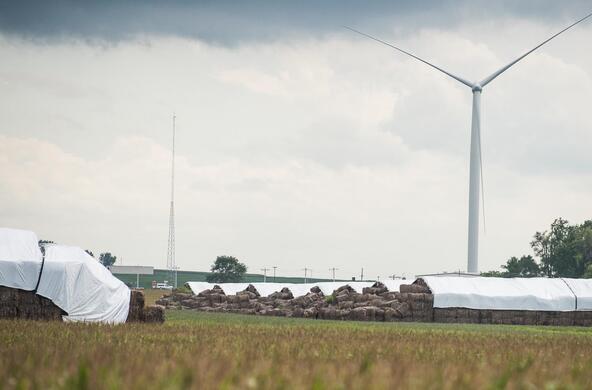Climate change predictions for the northeastern United States call for an increase in: precipitation, winter rain, winter flooding, and the frequency of nor'easters. Frequent and longer summer droughts and a possible increase in tropical storms have also been forecast. Since 1984, the Cary Institute has been collecting climate data. Our data substantiate these predictions for the past 25 years in Dutchess County.
Since 1984, the increase in total annual precipitation has been slight, about 1/3 inch per year, but this trend is statistically significant. The winter months of January and December have seen an increase in the volume of precipitation, but May and July receive less precipitation than 24 years ago. For the rest of the year, precipitation hasn't changed significantly since 1984.
The proportion of winter precipitation that falls as rain has increased from about 40% of the volume to about 60% of the volume. And the number of winter rain events greater than one inch has increased from about two to about four events per season, indicating that the number of potential flooding events in winter has increased. All of these changes are consistent with predictions of the effects of warming on the region's climate.
In a recent paper published in the American Chemical Society's Environmental Science & Technology, we examined how the changing climate has influenced the chemistry of precipitation. We were particularly interested in whether we would see a decline in acid rain that wasn't due to reductions in the emissions of air pollutants such as sulfur dioxide and nitrogen oxides, but due to an increase in precipitation from tropical storms coming from the east. Easterly storms are much cleaner than westerly storms because they don't traverse the area of the country that has coal burning power plants.
To see if there are more storms coming from the east than there were 25 years ago, we employed a model written by National Oceanic and Atmospheric Administration. The model allowed us to look at the position of air masses prior to the onset of precipitation events. These "backward trajectories" show us the pathway that air has traveled before rainfall or snowfall begins.
Precipitation captures pollutants that are in the air; by coupling backward trajectories with our long-term chemistry data, we were able to compare the chemistry of storms originating in the east with storms originating in the west. In the absence of long-term data, it would be impossible to examine changes in the origins and chemistry of rain storms.
We found that the number of tropical storms from the east has increased, but the number of storms from the west hasn't changed—at least here in Dutchess County. The increase in storms from the east has made our precipitation cleaner than we expected, but only by a small amount. Unfortunately, we won't be able to rely on these storms to reduce the acid rain problem. We still need to work on reducing the emissions of acid rain precursors if we want our precipitation to be free of unnatural acidity.





